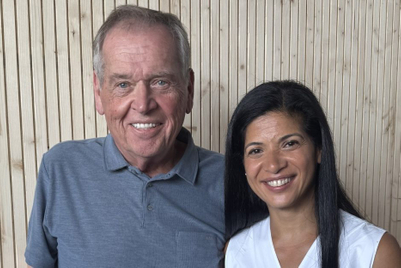
The chef, whose fame is rooted in TV and The Naked Chef, transitioned to YouTube after noticing a drop-off in TV viewers, even as his Facebook and Twitter followers shot up. While Oliver was popular among millennials, they weren’t watching his shows.
It isn’t just happening to Jamie, notes Richard Herd, head of Food Tube.
According to 2014 stats from Ofcom, the average number of broadcast TV minutes being watched on a TV set is dropping 5% year on year, driven by younger audiences switching to on-demand services like Netflix, and YouTube.
Richard Herd, speaking the Marketing Digital Exchange event, said: "They are not going to get to 22 years old and suddenly turn the telly on and come back. They have gone now. We have to find a way to engage with those viewers and to understand what they want from their media."
Here are Herd’s tips on conquering YouTube:
Find a narrative
A recipe, according to Herd, is a natural storytelling format – there’s a beginning, middle and end.
Other brands might look on in envy at such a ready-made way of creating content, but even recipes were hard to get right.
For starters, the Food Tube team made the mistake of trying to create recipes the way they did on TV.
Herd said: "We’d lift out some of the recipe sequences from the long-form show, drop in there, and we’d have a lovely time and get loads of subscribers."
In fact, the team "got spanked" at the beginning. Where Jamie’s TV show set in Tuscany can have a three-minute intro to set the scene, this just looks rambly and boring on YouTube, says Herd. After examining their YouTube stats, the team found that viewers switched off before Jamie had even got to making the recipe.
On YouTube, the team has more like three minutes to create an entire recipe, so it’s essential to hook viewers in other ways.
Be upfront
When Jamie Oliver’s team first started dabbling with YouTube, they initially viewed the platform as a repository for educational videos.
Herd points to one early mistake – a video posted to Jamie Oliver’s channel, called ‘How to – assemble a fruit pie’. Herd notes that any reasonable viewer would expect to watch Jamie himself assembling a pie. Instead, they get this:
Herd said: "That’s essentially the problem we had with YouTube - it was just a place we put videos up and they’d be very functional videos about how to put a pie crust on with Pete, one of our food team members.
"Pete’s a lovely guy, but most of the comments under that video were ‘who the f*ck is this boring man?’"
With these initial video efforts, the team found 53% of the viewers would leave after 23 seconds.
Herd said: "You have to be honest and authentic with what you’re giving them, because that’s the way to make an amazing YouTube video."
Clearly labelling videos with guest presenters, and bringing in personalities like Alfie Deyes boosted engagement, Herd says.
Find strong characters
With limited access to Jamie himself, the Food Tube team has broadened out its video network to include other chefs who can fill the gaps.
One example is Gennaro Contaldo, an Italian chef and Jamie Oliver’s mentor.
Contaldo is eccentric on-camera, playing up to his Italian roots with lively tutorials. His mannerisms lend themselves to parody and lively edits, something the team wouldn’t consider on TV.
Herd describes a "new grammar" of YouTube, which means punchy video intros and breaking out of a "nice safe zone".
After Gennaro Contaldo’s remix video was posted onto Food Tube, Herd says, the millennial audience came back to see his full-length recipe videos.
Video isn’t cheap
While the likes of PewDiePie give off the impression of being a one-man editing band, Food Tube has 32 staff managing its 22 channels.
Brands that want to take video seriously need to invest in similar resources to TV, according to Herd.
Herd said: "We’re an independent production company, the same team that makes Jamie’s Channel 4 shows. It’s not cheap, but that’s because we’ve got Jamie Oliver at the forefront of what he’s doing."
While "one camera, one kitchen" is possible, Herd says, Food Tube has to meet higher standards.


.jpg&h=334&w=500&q=100&v=20250320&c=1)
.jpg&h=334&w=500&q=100&v=20250320&c=1)

.png&h=334&w=500&q=100&v=20250320&c=1)

.png&h=334&w=500&q=100&v=20250320&c=1)

.jpg&h=334&w=500&q=100&v=20250320&c=1)





.jpg&h=268&w=401&q=100&v=20250320&c=1)



